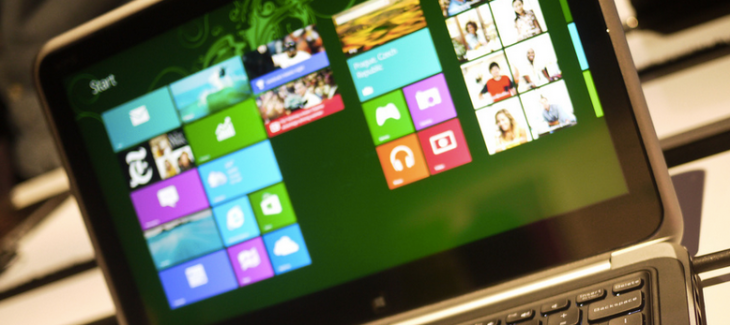Hot damn, changes. ZDNet and The Verge reported on a story that, at first blush, sounds downright strange: Microsoft may do away with charging for Windows in the future.
Microsoft selling Windows to OEM partners is even more entrenched than apple pie is to Americanism. No more of that? It’s almost unthinkable.
However, once you get past the oddity of the concept, it can make sense if you approach it properly. Let’s do this in a section-list format for brevity:
1. Microsoft has made billions selling Windows to consumers through its OEM partners. It now also sells Windows to consumers on devices that it builds. This means it has new ways to monetize a New PC To Consumer.
2. The era in which Microsoft made the bulk of its Windows income is not now. Windows OEM revenue is falling. If it weren’t for corporate PC sales, the top line that Microsoft derives from Windows would be in even faster decline. And those dollars are more based on the end of Windows XP than market appetite for new computers and Windows itself.
3. Zero-cost OS competition poses a real, if yet un-material, threat to Microsoft. Chromebooks can sell for less because they don’t include an OS fee to Google. Windows-based devices need to compete on price, and given razor-thin OEM margins, Microsoft puts hardware firms in a tough spot; if you can make more per device selling Chromebooks over Windows-based laptops, what are you going to spend more time working on?
4. Microsoft, noticing that pressure, is said to have dramatically cut the price of Windows on lower-cost devices. This helps OEMs, and lowers — possibly — the consumer price of Windows-based devices.
5. In for a penny, in for a pound. If Microsoft is lowering the price of Windows in a specific context, what would it look like if the company stopped charging for it altogether? At the moment, it would be a financial catastrophe for the firm. OEM revenues totaled more than $5 billion in Microsoft’s most recent fiscal quarter.
6. So what can Microsoft do? Move in steps. Name another Microsoft product that it is transitioning from a single lump payment to a new revenue model. Office. And that’s going pretty well. But instead of deleting the traditional Office SKUs from its lineup, Microsoft is instead letting the past ease over to the future at its own pace.
7. This brings us to Windows With Bing. Paul Thurrott has a few good ideas on how Microsoft could afford to release a version of Windows for free. It would have to generate at least its OEM fee, perhaps over no more than a two- or three-year basis. Possible? Perhaps with a combination of search revenues, OneDrive storage fees, advertising in Bing apps, and so forth. But for those various revenue streams to be able to reach parity with a direct OEM fee will take time.
8. It’s worth noting that Microsoft is working to move the monetization of Office to a direct-fee service. You use it, you pay. With Windows, the idea appears to be different: Use Windows, and you get it for free; we’ll make the money up from you along the way.
9. Microsoft can’t afford to give away Windows yet. But once the above-listed revenues become mature, it can. There is a gaping time gap betwixt the two. Microsoft didn’t ax standalone Office SKUs, allowing Office 365 to grow without too much pressure. It is similarly likely that the company will introduce very targeted free Windows 8.x SKUs to both test, and prove that it can recoup lost OEM incomes to itself, and investors.
10. 100GB of OneDrive is 50 bucks a year. That’s what Microsoft got for a Windows license, if scuttlebutt is accurate. That points to a future in which Microsoft might be able to eat off services and give Windows away for free. Philosophically, does that lower the importance of Windows at Microsoft? In a sense, but I think that we should start to think of Windows not as a software layer on top of hardware, but instead as the layer between devices and services.
You know, that new Microsoft business model.
IMAGE BY FLICKR USER DELL INC. UNDER CC BY 2.0 LICENSE (IMAGE HAS BEEN CROPPED)
